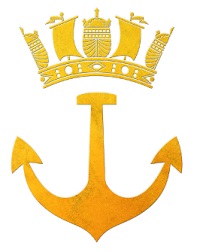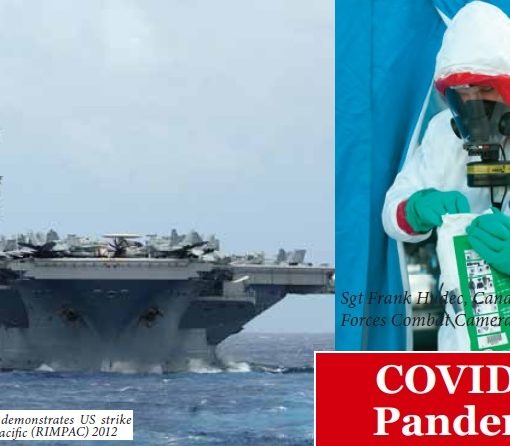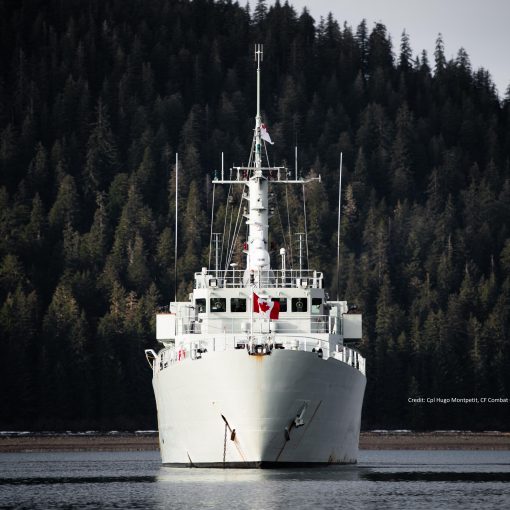By Ted Barnes, 13 July 2025
Over the past few years, we've watched the evolution of what started as a modest Kingston-class Replacement turn into something far more ambitious. First branded as the Canadian Multi-Purpose Corvette Project, it has now matured into what is being called the Continental Defence Corvette (CDC), a shift that reflects how dramatically the project's scope and expectations have changed.
Originally, the goal was relatively simple: replace the aging Kingston-class with a more modern coastal patrol and mine countermeasures (MCM) capable vessel. But that vision has been left behind. The CDC is now trending toward a light frigate or heavily armed blue water corvette, potentially with VLS cells, advanced sensors, and modular mission systems. This transformation isn’t just a branding change; it’s a reflection of the changing threat landscape and growing recognition that Canada needs Tier 2 combatants to cover the operational gap between the AOPS and the future River-class destroyers.
Why We Need the CDC
The CDC is no longer just about mine warfare or sovereignty patrols in the Gulf of St. Lawrence. It’s about giving Canada:
- High-readiness naval presence along our vast coastlines and the Arctic;
- Interoperability with NATO and NORAD partners in continental and North Atlantic defence;
- A ship small enough to be affordable and numerous, yet powerful enough to deter and respond to gray zone maritime threats from subs to drones to hybrid coastal incursions; and
- Surge flexibility: a class of warships that can be built faster and deployed earlier than the massive, long build time Canadian Surface Combatants.
Why an MCM Platform Is Still Required
As much as the CDC promises modularity and versatility, we must be clear-eyed: mine countermeasures is a full-time job, not a plug-and-play afterthought. A CDC may support limited MCM through modular payloads like the Kingston-class or drones, but when it comes to dedicated mine detection, clearance and sweeping in complex littoral zones we still need dedicated MCM vessels and that capability.
These ships should be optimized for low signature, shallow water operations with specialized crews and autonomous systems. Anything less is a capability gap, especially given NATO expectations and the increasing mine threat seen in conflict zones like the Baltic and Red Sea.
The Downsides of Two Classes and How to Innovate Around It
Yes, two separate classes (CDC + dedicated MCM vessels) mean more pressure on budgets, training pipelines and crewing. In the current CAF climate of personnel shortages and aging infrastructure, that’s no small issue.
But there are real solutions:
- Heavy reliance on Naval Reservists: Canada’s reserve force is uniquely suited to MCM operations, as the Kingston-class has proven for decades. Leverage this strength. Canada has already indicated the intention to increase the reserves to 50,000 and this could dovetail nicely with a hybrid reg/res crewing model.
- Standardized hulls with variant loadouts: Imagine a shared platform between the CDC and MCM ship, with mission modules and AI enabled systems doing much of the work, keeping operational costs and training needs aligned.
- Autonomous and semi-autonomous systems: Both on the CDC and MCM vessel. Reduce onboard crew requirements through smart technology, offboard systems and remote operations.
- Flexible crewing models: Rotational deployments and cross decked systems reduce personnel fatigue and increase ship availability.
Final Thoughts
The CDC is no longer just a patrol boat or a minesweeper. It’s Canada’s answer to the question of what a modern, agile and cost-effective navy looks like in a contested world. But we can’t let the pendulum swing too far. If we want the CDC to fulfill its potential, it must be complemented by a dedicated MCM capability and not burdened with trying to be everything to everyone.
Curious to hear others’ thoughts, especially those with experience on the Kingston-class or in MCM ops. Is the CDC going too far? Or not far enough?
Image: HMCS Kingston participates in the NATO exercise BALTOPS 50 with other MCM ships in June 2021. Credit: Royal Canadian Navy





11 thoughts on “The Evolution and Need for the Continental Defence Corvette and Why a Dedicated MCM Vessel Still Matters”
I’m very anxious to follow the developing discussion on the merits of Canada introducing Continental Defense Corvettes (CDCs) with the benefits of a shared hull design solution for MCM operations. Particularly interested in others’ perspective of optimal mix, while also interested in ultimate weapons, sensors outfitting for the CDCs.
Hello Greg. Whatever the follow-on build will be, as a ‘true complement’ to the RCDs, it must have an ability to meld into the RCD Task Group concept ‘future-proofing’ capabilities. In my own opinion, the CDC must have, as a minimum, a SPY 7/CCS 330/CEC/Links 11/16/22 & Satellite Comms capability along with some sort of MK 41 VLS weapons system. I do not, however, see them having a BMD/C2BMC capability requirement as I believe the RCD will eventually have. There would be no need for the CDC Corvette/Frigate to have that capability if they are working in consort with the RCDs in the future. The CDC must also have an improved & updated MCM capability along with modularized ASW capabilities and perhaps a laser defence system. It must also have a flight-deck & hangar & helicopter haul-down large enough to support some sort of ASW/rescue helicopter. It’s a lot to put into any CDC or small frigate of about 3-4000 tons, but with some input from the NSS, this could be easily accomplished. The RCN and government must have the political will to get this started, I believe, well before the first RCD (HMCS Fraser) is in the water. Cheers!
‘WE HAVE DONE SO MUCH, WITH SO LITTLE, FOR SO LONG, THAT NOW WE ARE READY TO DO ANYTHING WITH NOTHING….FOREVER!”
@David Dunlop there would be absolutly no need for the high end systems like the SPY7 in a small warship. You’re now entering the realms of the Norwegian Nansen class which in my opinion has all the gear but no idea! This is the problem with politicians as well keep tacking taskings on and then when the final bill comes in per unit have a stroke at the end.
In 2003 a Nansen cost $500m USD ($875USD / $1.2bn CAD today) per unit, they cost so much that they cut the VLS count from 16 to 8 to save money (except Rauld Amensen she has 16 cells). Simply put what the Norwegians got was a very large corvette / light frigate that has all the high end radars but no real actual teeth or munitions depth.
What we really need is just a mid-range platform that can be general purpose that slots between the current AOPS & the River class and one that carries decent munitions store at a decent price.
Canada should look at a dedicated mine countermeasures vessel as well as a vessel similar to the UK’s Type 31.
It is time to expand the RCN while there is the political will to do so. Politicians are fickle creatures. We need to, finally, provide the platforms needed to defend the longest coastline in the world as well as meet our NATO commitments. AIP or Nuke subs are a definite need as well.
Hello Derrick. I believe a dedicated MCM vessel, although required, would not be feasible for the RCN. A Type 31 Frigate with all the MCM upgrades required could be handled within the T31 and would be all that is required in one vessel. We could not crew both an MCM & T31 type vessel at the same time. In my opinion, I would take a close look at the Tasman-class Corvette as being offered by Navantia, Australia for the RAN. As I said to Greg, the next generation addition of a Tier 2 CDC Corvette for the RAN, whatever the follow-on build will be, as a ‘true complement’ to the RCDs, it must have an ability to meld into the RCD Task Group concept ‘future-proofing’ capabilities. In my opinion, the CDC must have, as a minimum, a SPY 7/CCS 330/CEC/Links 11/16/22 & Satellite Comms capability along with some sort of MK 41 VLS weapons system. I do not, however, see them having a BMD/C2BMC capability requirement as I believe the RCD will eventually have. There would be no need for the CDC Corvette/Frigate to have that capability if they are working in consort with the RCDs in the future. The CDC must also have an updated MCM capability along with modularized ASW Phased Array & HMS capability and perhaps a laser defence system. It must also have a flight-deck & hangar & helicopter haul-down large enough to support some sort of ASW/Rescue Helo. It’s a lot to put into any CDC or small frigate of about 3-4000 tonnes, but with some input from the NSS, this could be easily accomplished. The RCN and government must have the political will to get this started, I believe, well before the first RCD (HMCS Fraser) is in the water. Cheers!
https://navantia.com.au/wp-content/uploads/2023/11/TASMAN-CLASS-CORVETTE.pdf
“We have done so much, with so little, for so long, that now we are readt to do anything with nothing…. forever!”
I agree obviously. The choice and how far will the RCN go in capability of the CDC is debated quite a bit currently. The only constraints I can see is funding and crew size and what will do the job without breaking the backs of the RCN.
With mine warfare becoming more autonomous it does seem a good move. However, retiring the Kingstons before the replacement is in the water still leaves a capability gap. A 1 for 1 replacement with a light frigate would certainly show our NATO allies that defence is serious. The current announcement leaves us open to scorn and ridicule especially from our neighbours down south.
Overall though, a replacement vessel doesn’t need to be high end or fancy — a small light frigate even with 8 MK41 VLS would be good enough, the problem we will likely see is that mission creep will set in ballooning what could be considered a reasonable and sensible idea.
Hello Blair. Totally agree that retiring 8 MCDV’s before Canada has even selected its replacement CDC, seems to be a wrong move by the RCN and has already led to scorn by our allies. The CDC Corvette envisioned for the MCDV replacement does not have to be totally “high-end” as you say, however in order for this new CDC to work effectively within a RCD Task Group, a SPY 7 LRDR (with perhaps fewer RMAs), a CEC with a full CMS 330 capability would be, in my opinion, the very minimum required along with (at the very most) 16 MK 41 Extended Range (ER) VLS Cells. An ASW Helo/Rescue A/C, with a supporting Hanger & Helo Haul-down capability would also be a must, as well as an ASW Towed-Array system. An HMS along with some sort of Laser Defence System may or may not be installed initially however would be considered for any future-proofing of the CDC Corvette. A 9 person rescue RHIB could also be incorporated either within a smaller MBHS or secured on the main-deck midships with a top deck crane. It should also have a medium-sized gun forward like the Bofors 57mm & magazine system would also be a must. The crew size, with some ‘billeting’ creativity, could be brought down to approximately 100 billets with bunk space for extra personnel. This CDC, although not high-end, would be just about what the RCN requires for any MCDV replacement. As I said before, the Navantia CDC Tasman-class Corvette would be an excellent option for Canada to consider. Cheers!
David,
I draw your attention to VAdm Topshee’s comments about the rationale for, and their weight implications, for including the SPY-7 radar on the RCD:
“Vice-Admiral Angus Topshee said Friday in Halifax that the Canadian ships, which are based on the BAE Type 26 design used in the United Kingdom and Australia, are heavier than their counterparts because of design changes.
The navy commander said the River class destroyers have a radar — considered the heart of the modern warship — located higher up in the vessel than in its Australian and British counterparts. That has required associated power, cooling and other supporting machinery, which add 900 tonnes in weight.
Topshee also said that while the Australian and United Kingdom Type 26 ships are primarily intended as anti-submarine escorts, the River-class will be expected to defend against air attack and potentially to oversee command and control of other vessels.”
Michael Tutton, “Halifax shipyard tests steel-cutting methods as first new destroyer expected by 2035”, CP, 28 June 2024.
Because you have not argued that the CDC will be primarily defending against air attacks nor will it be overseeing command and control over other warships — the RCD will be doing these tasks — then why add an additional 900 tonnes to what is supposed to be a much smaller and cheaper CDC warship? This would be the essence of ‘mission/design creep.’
Hello Dan. I believe the Hunter Class has a heavier weight as a result of the CEAFAR radar system with a total weight of well over 10,000 tonnes. The Lockheed Martin (LM) SPY 7 (V3) LRDR gives the River Class Destroyer (RCD) a total weight of 8,080 tonnes. The LM SPY 7 (V2) on the Navantia Spanish F110 Bonifez Class Frigate gives the frigate a total weight of 6,100 tonnes. The Japanese Mogami Class frigate will have the (at sea) LM SPY 7 (V1) LRDR has a total weight of 9,500 tonnes with the largest # of RMAs. It would be helpful if you could let members know the exact height and weights of all 3 versions of the LM SPY 7 (V1, V2, V3-sea versions) LRDR systems for comparison purposes along with total RMAs for each class. What I can say with some confidence is that the RCD SPY 7 (V3) LRDR has the fewest # of RMAs as compared to the SPY 7 (V1, V2) shipboard versions. The BAE Type 26 frigate design is so foreign now as compared to the Hunter Class and RCD class designs that it would be useless to compare it to the others.
Interesting, however technology no longer requires a large dedicated ship filled with personnel to perform MCM duties. France and the UK are using the PathMaster from Thales, and the US is using the Hunterwater system from L3Harris. The USV and UAV combination is better and more accurate at mine detection and the UAV detonation of mines when required is far less dangerous to people. The CDC should be able to manage an unmanned UAV/USV mine identification and removal. More importantly, with the advent of mobile ‘lurking’ drones including underwater ones, MCM needs to evolve.